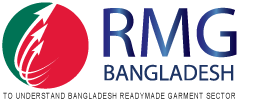Bangladesh’s business leaders are expressing optimism about potential growth in 2025, contingent on controlling inflation and successful banking reforms. However, concerns about political stability and public order loom large, according to a recent survey conducted by Economic Intelligence Bangladesh (EIB), a collaboration between The Business Standard and DataSense.
The survey reveals that 45 per cent of business executives believe that managing inflation and implementing necessary reforms in the banking sector are the most significant opportunities for enhancing their performance in the coming year. The report highlights those sectors such as ready-made garments (RMG), furniture, tea, aviation, and pharmaceuticals are particularly focused on these developments.
In addition to domestic concerns, leaders are eyeing increased foreign exchange reserves and the prospect of Donald Trump returning to the US presidency as potential catalysts for business growth. However, a striking 75 per cent of respondents expressed fears that political uncertainty and instability in law and order pose the greatest risks for businesses in 2025. This survey was conducted in December 2024, shortly before interim Chief Adviser Prof Muhammad Yunus indicated that national elections might occur at the end of 2025 or in early 2026.
Furthermore, the survey indicates that 60 per cent of executives consider high-interest burdens from loans to be a significant downside for the upcoming year, with high energy and utility prices and bureaucratic inefficiency also highlighted as pressing concerns.
Md Abdul Jabbar, managing director of DBL Group, emphasised the need to minimise corruption to boost investor confidence and improve the business climate. Meanwhile, RN Paul, managing director of Pran-RFL Group, urged business leaders to remain politically neutral and focus on their operations, advocating for collaboration with the government to facilitate business growth.
Regarding expectations for production growth and costs, the outlook remains cautious. While 60 per cent of respondents are optimistic about earning growth—15 per cent of whom anticipate high earnings—80 per cent predict an increase in production costs. Of those, 50 per cent expect a moderate rise, while 30 per cent brace for a steep increase, raising concerns about profitability in the year ahead.
















